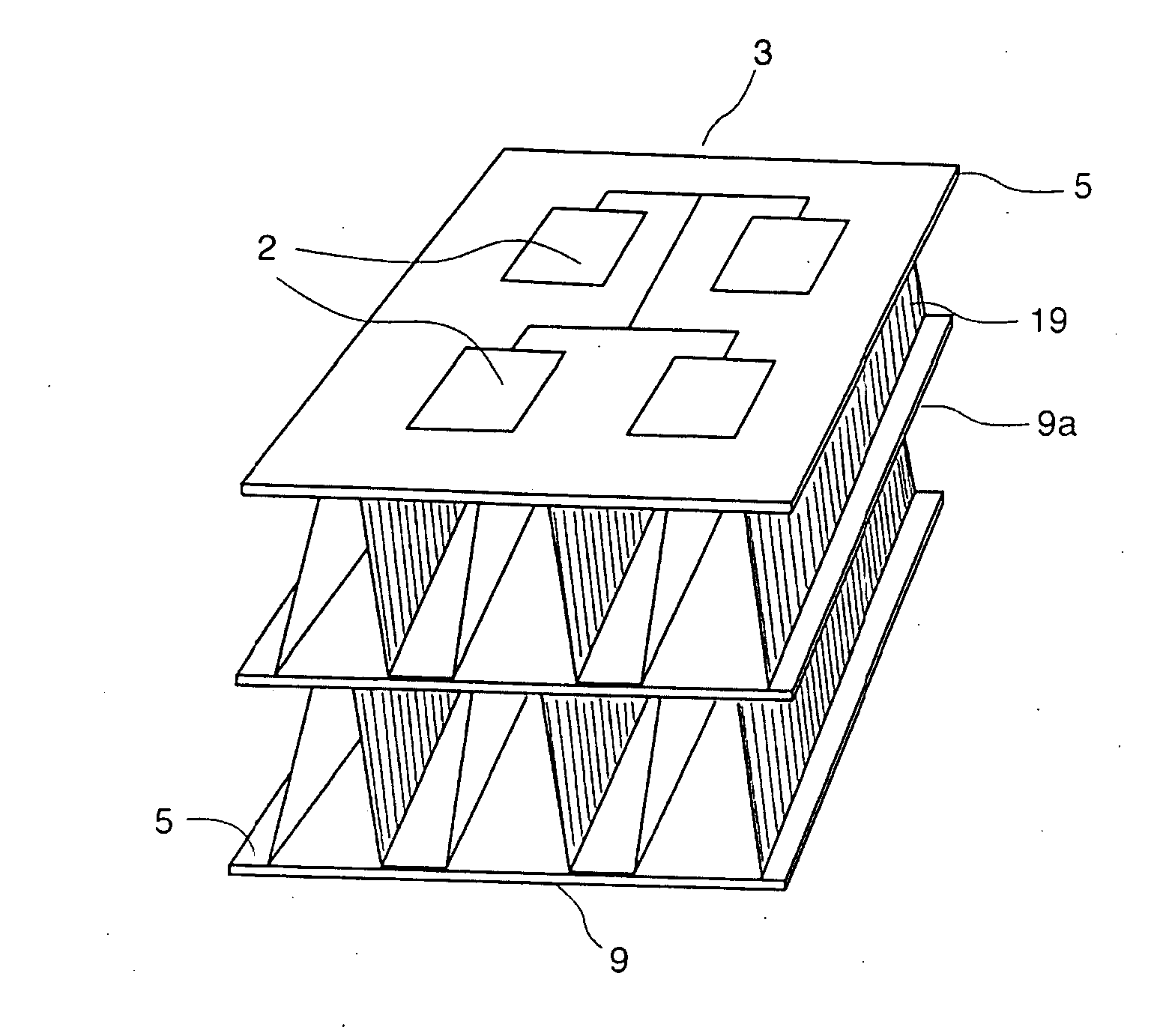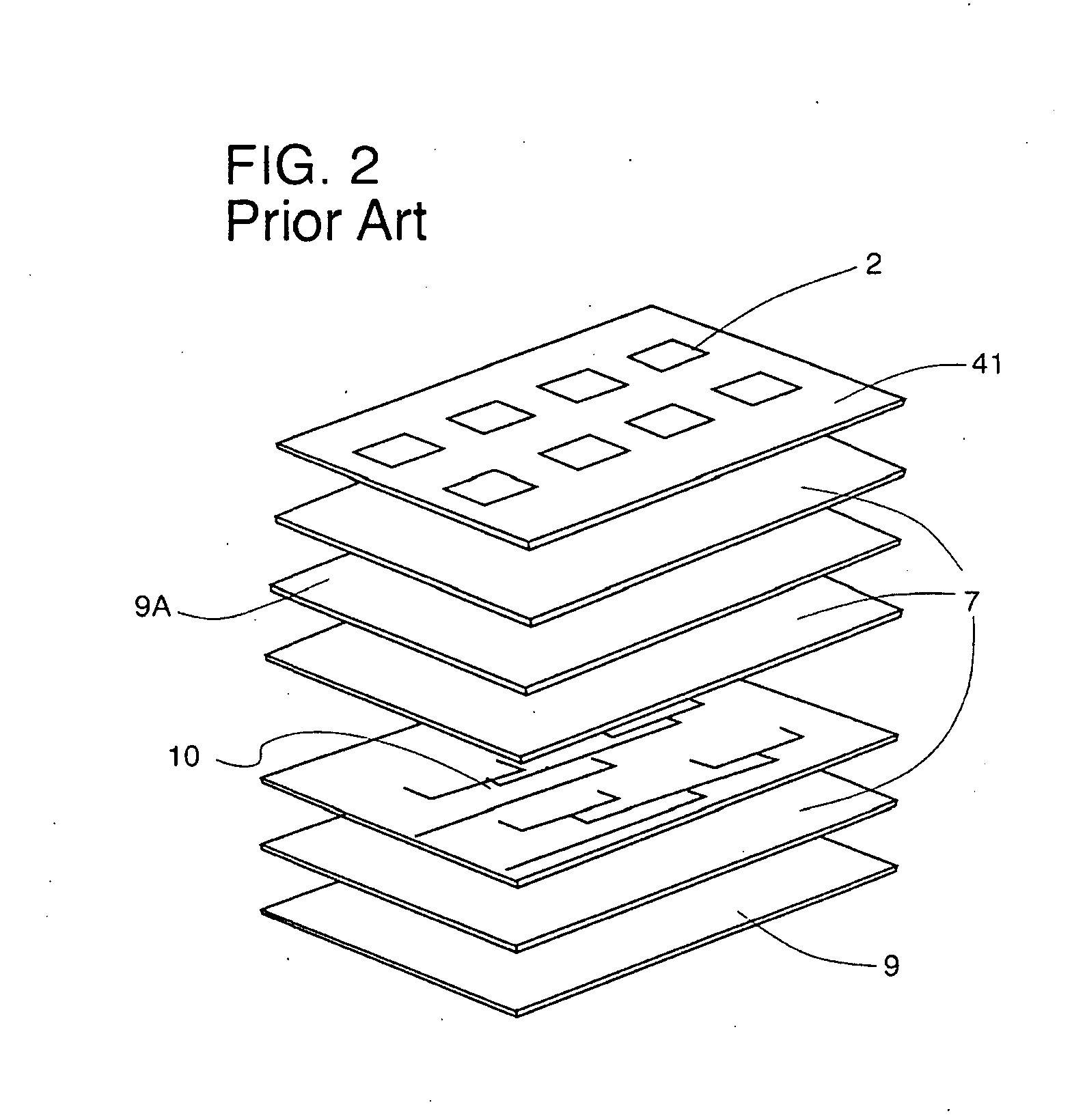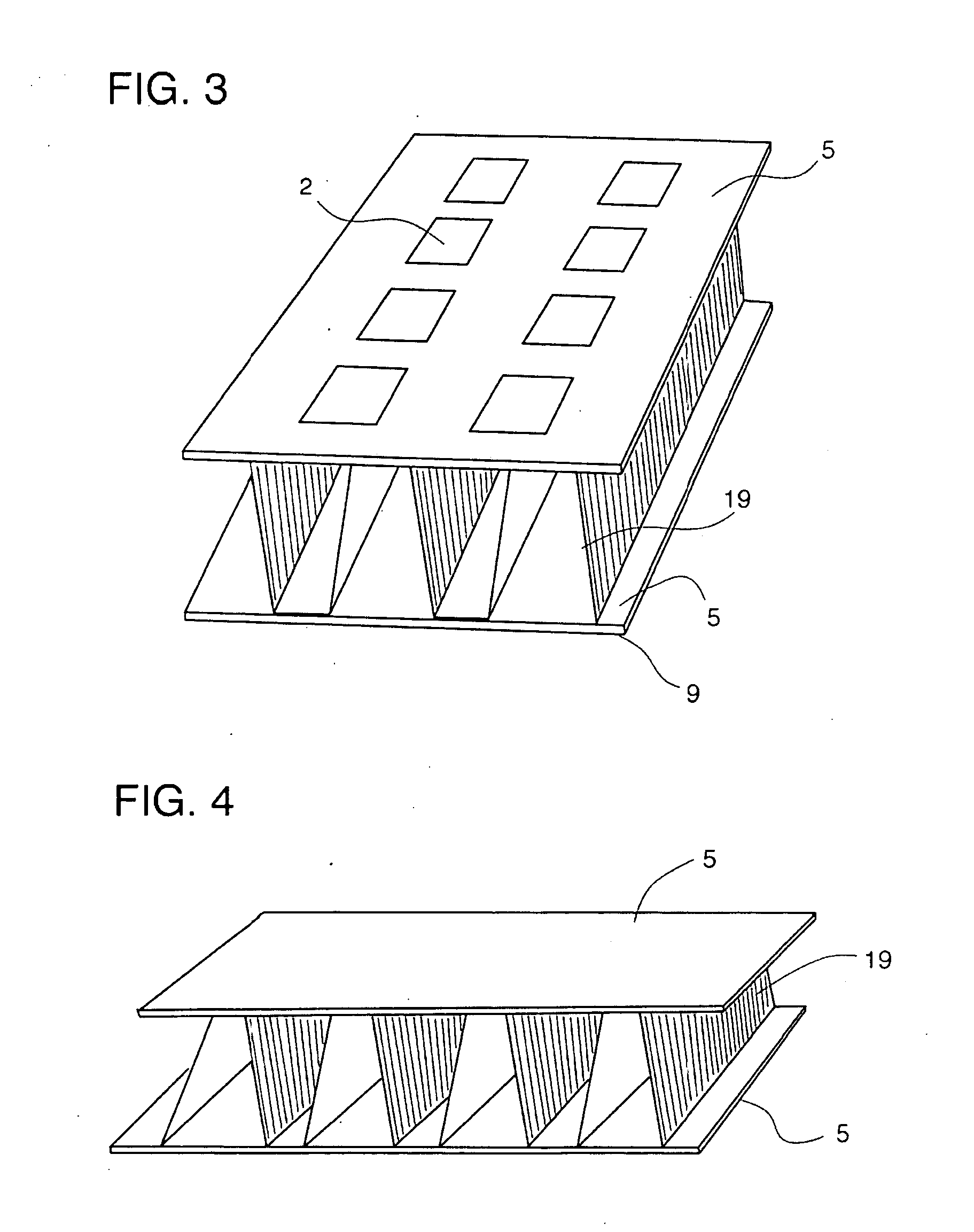Non-woven textile microwave patch antennas and components
a technology of microwave patch and antenna, which is applied in the field of microstrip patch or slot antenna, can solve the problems of not being flexible and achieve the effects of increasing separation, not being flexible, and adding weight to the antenna
- Summary
- Abstract
- Description
- Claims
- Application Information
AI Technical Summary
Benefits of technology
Problems solved by technology
Method used
Image
Examples
Embodiment Construction
[0023]FIG. 2 is a diagram of the current technology for a multiple patch antenna design which consists of a radiating layer 41 of antenna patches 2, dielectric spacer layer 7 a feed layer 10 that supplies current through the dielectric spacer and an aperturated ground plane 9A. A conventional ground plane 9 at the opposite end of the layers acts to contain the microwave energy. Not shown in layer 9A of this diagram are feed slots or apertures to connect the various radiating layers of the multiple patch antenna.
[0024]This detailed description will concern the construction of a three layer micro-strip antenna. FIG. 3 shows a means of constructing a three layer micro-strip antenna where a molded or folded non-woven fabric is incorporated as an interdigitated (corrugated), molded, non-woven spacer fabric 19. Here, the antenna patches 2 and feedlines 3, are cut from a conductive fabric, ShieldX 151, 11, and attached to a retainer non-woven fabric 5. The non-woven dielectric spacer 7 in ...
PUM
| Property | Measurement | Unit |
|---|---|---|
| microwave frequencies | aaaaa | aaaaa |
| microwave frequencies | aaaaa | aaaaa |
| microwave frequencies | aaaaa | aaaaa |
Abstract
Description
Claims
Application Information
 Login to View More
Login to View More - R&D
- Intellectual Property
- Life Sciences
- Materials
- Tech Scout
- Unparalleled Data Quality
- Higher Quality Content
- 60% Fewer Hallucinations
Browse by: Latest US Patents, China's latest patents, Technical Efficacy Thesaurus, Application Domain, Technology Topic, Popular Technical Reports.
© 2025 PatSnap. All rights reserved.Legal|Privacy policy|Modern Slavery Act Transparency Statement|Sitemap|About US| Contact US: help@patsnap.com



